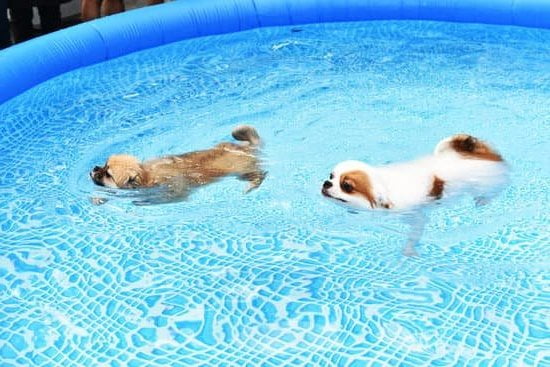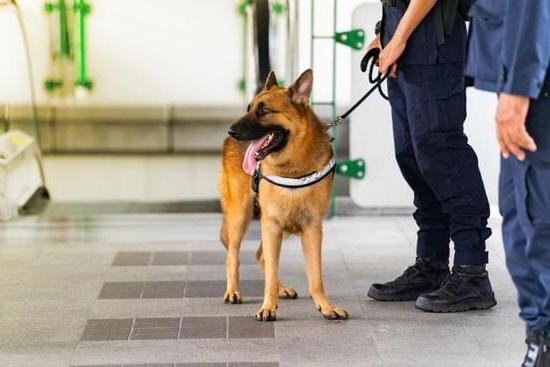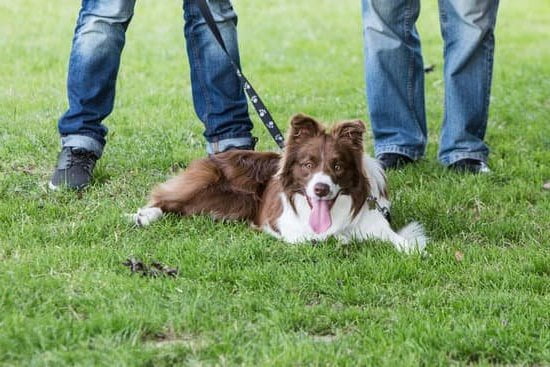Are you wondering how to potty train your dog in a crate? Crate training is an effective and humane method for potty training your furry friend, and this article will guide you through the process. From choosing the right crate to establishing a potty training schedule, using positive reinforcement, and handling accidents, we will cover everything you need to know to successfully potty train your dog in a crate.
Crate training offers numerous benefits for both you and your dog. Not only does it provide a safe and secure space for your pet, but it also helps with housebreaking by establishing a routine and providing a den-like environment that encourages control of their bladder and bowel movements. By understanding the advantages of crate training, you can make the process of potty training more manageable and less stressful for both you and your furry companion.
In this article, we will discuss key aspects of crate training for potty training, such as choosing the right crate size, material, and location. We will also delve into creating a positive association with the crate, establishing a consistent potty training schedule, using positive reinforcement techniques, supervising play and potty breaks, handling accidents with patience and understanding, as well as gradually transitioning from crate training to freedom in the home while maintaining successful potty training.
Whether you are a new dog owner or looking to refine your current potty training methods, this comprehensive guide will provide valuable insights on how to effectively potty train your dog in a crate.
Choosing the Right Crate
When it comes to potty training your dog in a crate, choosing the right crate is essential for successful training. Here are some important factors to consider when selecting a crate for your dog:
- Size: The crate should be just big enough for your dog to stand up, turn around, and lay down comfortably. A crate that is too large may allow your dog to use one corner as a bathroom area, while a crate that is too small can be uncomfortable for your dog.
- Material: Crates come in various materials such as wire, plastic, and fabric. Consider your dog’s temperament and chewing habits when choosing the material for the crate. Wire crates offer more ventilation and visibility, while plastic crates provide more den-like security.
- Location: Choose a quiet and peaceful location in your home for the crate. Avoid placing it near drafty areas or loud appliances. The goal is to create a positive association with the crate as a safe and comfortable space for your dog.
Taking these factors into consideration will help set the stage for successful potty training with a crate. Keep in mind that the right crate will not only provide a secure environment for your dog but also aid in creating routines and habits conducive to potty training success.
By carefully considering the size, material, and location of the crate, you are setting up an important foundation for successful potty training with a crate. Remember that every dog is different, so take time to observe your pet’s behavior and adjust accordingly to ensure their comfort and success in their training journey.
Creating a Positive Association With the Crate
When it comes to potty training your dog in a crate, creating a positive association with the crate is crucial for success. Introducing your dog to the crate and making it a comfortable space will not only help with potty training, but also ensure that your dog sees the crate as a safe and cozy area. This section will provide tips on how to properly introduce your dog to the crate and make it a comfortable space for them.
Choosing the Right Crate
Before introducing your dog to the crate, it’s important to choose the right one. The size of the crate should allow your dog to stand up, turn around, and lie down comfortably. The material should be sturdy and durable, while the location of the crate should be in a quiet and peaceful area of your home.
Introducing Your Dog to the Crate
To create a positive association with the crate, gradually introduce your dog to it in a calm and relaxed manner. Start by leaving the door open and placing treats or toys inside to encourage exploration. Avoid forcing your dog into the crate, instead allowing them to enter voluntarily.
Making It a Comfortable Space
Once your dog is comfortable entering the crate, make it cozy by adding blankets or bedding that they enjoy. You can also leave a piece of clothing with your scent inside the crate to provide comfort while you’re away.
Additionally, consider feeding your dog their meals inside the crate to further associate it with positive experiences. Making the crate an inviting space will help with successful potty training efforts as well as ensuring that your dog feels secure in their designated area.
Establishing a Potty Training Schedule
When it comes to potty training your dog in a crate, consistency and routine are key factors for success. Just like humans, dogs thrive on predictability and structure, so establishing a regular schedule for potty breaks is essential. By doing so, you can help your dog understand when and where they are supposed to relieve themselves, making the potty training process much smoother.
One of the first steps in establishing a potty training schedule is to take note of your dog’s natural bathroom habits. Pay attention to the times of day when they typically need to go outside, such as after meals or upon waking up in the morning. Use this information to create a routine for potty breaks, ensuring that your dog has ample opportunities to eliminate waste throughout the day.
It’s also important to be consistent with the timing of potty breaks. Try to take your dog out at the same times each day, whether it’s first thing in the morning, after meals, or before bedtime.
Consistency reinforces the idea that there is a designated time and place for eliminating waste, which can accelerate the potty training process. By sticking to a schedule, you can help prevent accidents in the crate and promote successful potty training for your dog.
| Key Factor | Importance |
|---|---|
| Consistency | Reinforces designated time and location for bathroom breaks |
| Routine | Helps accelerate the potty training process by promoting predictability |
| Timing | Consistent scheduled potty breaks prevent accidents and reinforce proper elimination habits |
Using Positive Reinforcement
When it comes to potty training your dog in a crate, using positive reinforcement is a key component for success. Reward-based training involves giving your dog treats, praise, or other forms of positive reinforcement when they exhibit the desired behavior.
This can include waiting until they are outside to relieve themselves or alerting you when they need to go. It’s important to remember that potty training can take time and patience, so maintaining a positive attitude and approach is crucial.
Positive reinforcement helps create a strong association between good behavior and rewards in your dog’s mind. Consistently rewarding them for going outside rather than inside the crate helps reinforce the idea that this is the desired behavior. Additionally, being patient and understanding that accidents may happen during the training process is essential.
Punishing your dog for accidents can lead to fear or anxiety, making it harder for them to learn. Instead, focus on rewarding good behavior and redirecting them when accidents do occur.
Reward-based training also allows you to bond with your dog during the potty training process. By spending time together and using positive reinforcement techniques, you can build trust and strengthen your relationship while teaching them good habits. Remember that each dog is unique, so being flexible and adjusting your approach as needed will ultimately lead to more effective potty training in the long run.
| Positive Reinforcement Benefits | Importance of Patience |
|---|---|
| Creates a strong association between good behavior and rewards | Punishing dogs can lead to fear or anxiety |
| Allows bonding and trust-building during training | Each dog is unique, so flexibility is key |
Supervised Play and Potty Breaks
When potty training your dog in a crate, it’s important to have supervised playtime to monitor your dog’s behavior. This means keeping a close eye on your dog while they are outside of the crate and ensuring that they do not exhibit any signs of needing to go potty.
During supervised play, you can observe your dog for signs such as sniffing around, circling, or suddenly stopping their activity. These could be indicators that they need to relieve themselves. By being attentive during playtime, you can prevent accidents and encourage appropriate potty behavior.
In addition to supervised play, regular bathroom breaks are essential in the potty training process. Taking your dog outside to their designated potty area at consistent intervals helps them learn where it is appropriate to go potty. This routine also helps them understand that they will have opportunities to relieve themselves throughout the day.
Establishing a schedule for potty breaks will depend on your dog’s age, size, and individual needs. Puppies may need more frequent trips outside due to their smaller bladders, while adult dogs can generally hold it for longer periods. Monitoring how often your dog needs to go potty and adjusting the schedule accordingly is key in successful crate training.
Handling Accidents
Accidents are an inevitable part of potty training your dog in a crate. It’s important to understand that dogs may not always be able to hold their bladder or bowel movements, especially during the initial stages of training. When accidents do occur, it’s crucial to handle them in a way that reinforces positive behavior and maintains a supportive environment for your pet.
Here are some important tips for handling accidents during the potty training process:
- Clean up messes promptly: Accidents should be cleaned up as soon as they occur to prevent lingering odors and to avoid reinforcing the behavior. Use an enzymatic cleaner specifically designed for pet messes to thoroughly clean and remove any traces of urine or feces.
- Avoid punishment: Never scold or punish your dog for having an accident. Punishing a dog for something they may not yet understand can create fear and anxiety, which can hinder the training process.
- Stay patient: Potty training takes time and patience. It’s important to remain calm and understanding when accidents happen. Reacting with frustration or anger can have negative effects on your dog’s progress.
By following these guidelines, you can effectively manage accidents during the potty training process while maintaining a positive and supportive environment for your dog. Remember that consistency, patience, and positive reinforcement are key elements in successfully potty training your dog in a crate.
Gradual Freedom
In conclusion, potty training a dog in a crate requires patience, consistency, and positive reinforcement. The process involves choosing the right crate, creating a positive association with it, establishing a potty training schedule, using positive reinforcement, supervised play and potty breaks, handling accidents with care, and gradually introducing freedom while maintaining potty training success.
It is important to remember that every dog is different and may progress at their own pace. It is crucial to be patient and avoid punishing your dog for accidents during the training process. Consistency in routine and positive reinforcement are key factors in successfully transitioning from crate training to allowing your dog more freedom in the home.
By following the guidelines outlined in this article and remaining patient throughout the process, you can help your dog learn to be effectively potty trained within a crate and eventually transition to being successful with freedom within the home while maintaining their potty training success. Always remember that every milestone achieved by your furry friend should be celebrated, as it strengthens the bond between you and your pet.
Frequently Asked Questions
How Big Should a Dog Crate Be When Potty Training?
When potty training a dog, the crate should be big enough for the dog to stand up, turn around, and lie down comfortably. However, it should not be too large as the dog may use one side to eliminate and then move away from it to sleep or relax.
The idea is to create a space that discourages pottying while inside.
Should I Put Pee Pad in Crate?
It is generally not recommended to put a pee pad in the crate when potty training a dog. The purpose of using a crate during potty training is to encourage the dog to hold their bladder until they can be taken outside.
Placing a pee pad inside may confuse the dog and make it harder for them to understand where they are supposed to go.
How Long Do You Have to Keep a Puppy in a Crate Before Potty Training?
The length of time a puppy should spend in a crate before potty training varies depending on their age, but as a general guideline, young puppies may need to be taken out every 2-3 hours. As they grow older and gain better bladder control, the time between potty breaks can gradually be extended.
It’s important for owners to observe their puppy’s behavior and learn their cues for when they need to go outside.

Welcome to the blog! I am a professional dog trainer and have been working with dogs for many years. In this blog, I will be discussing various topics related to dog training, including tips, tricks, and advice. I hope you find this information helpful and informative. Thanks for reading!





